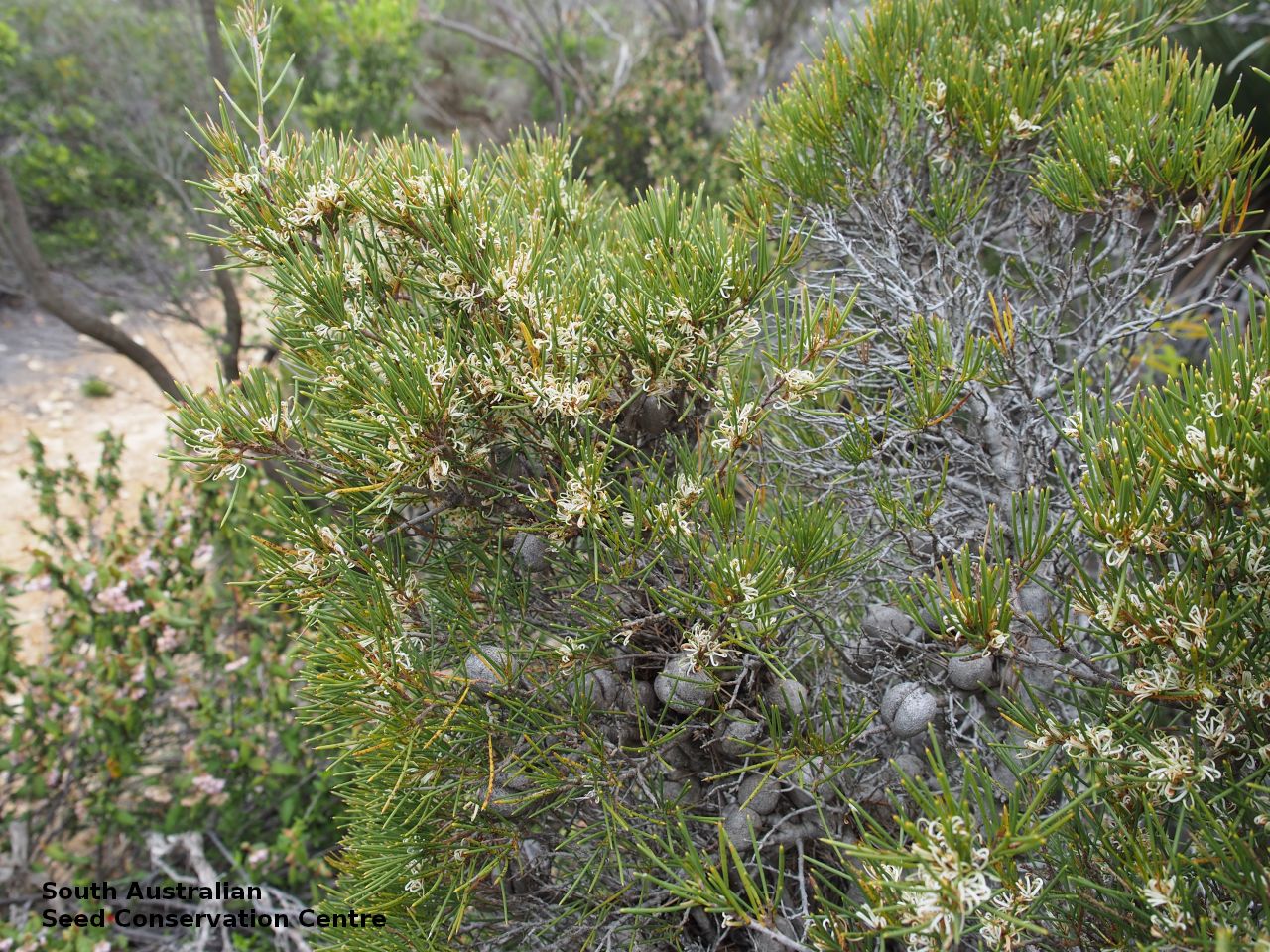

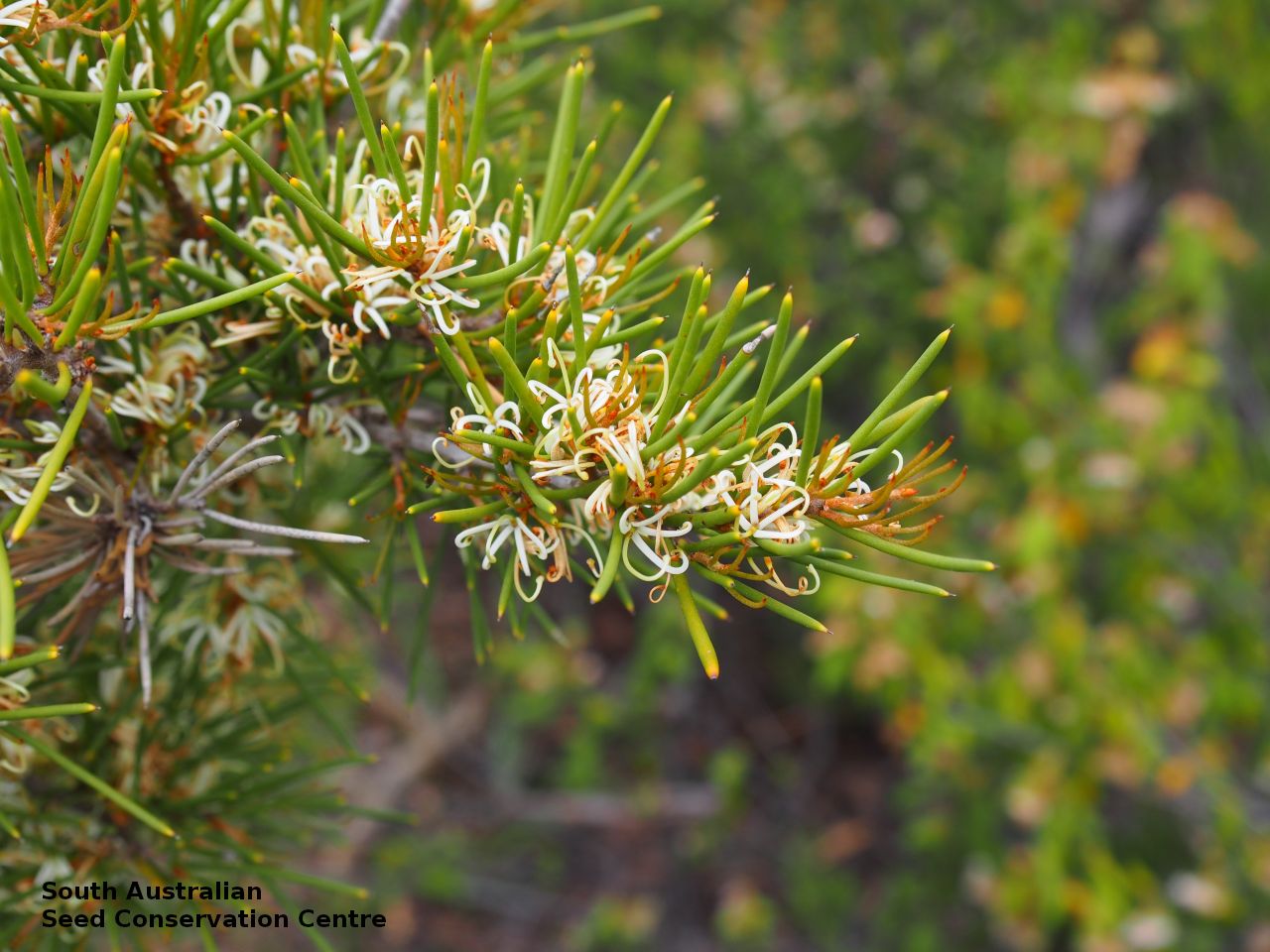
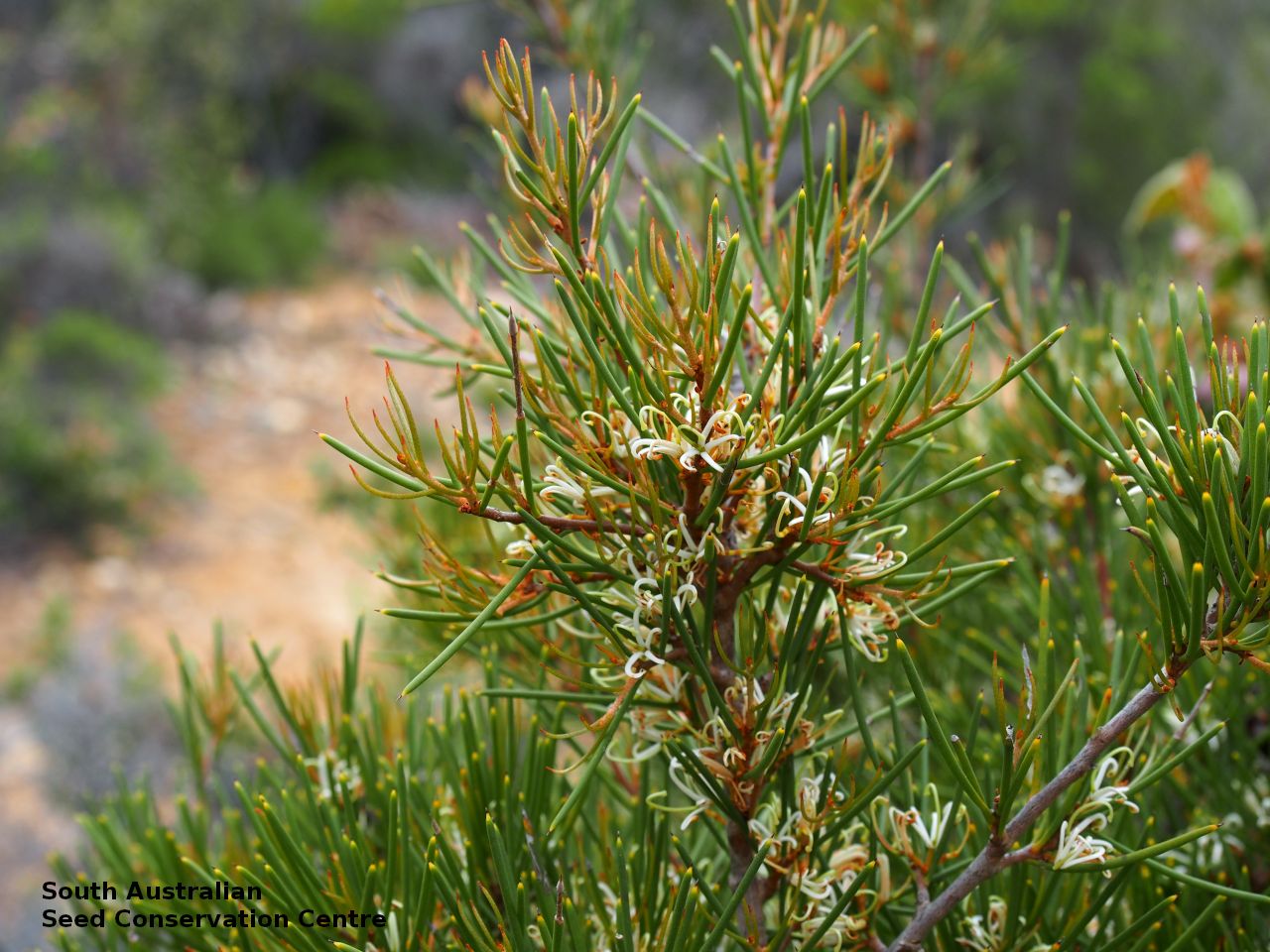
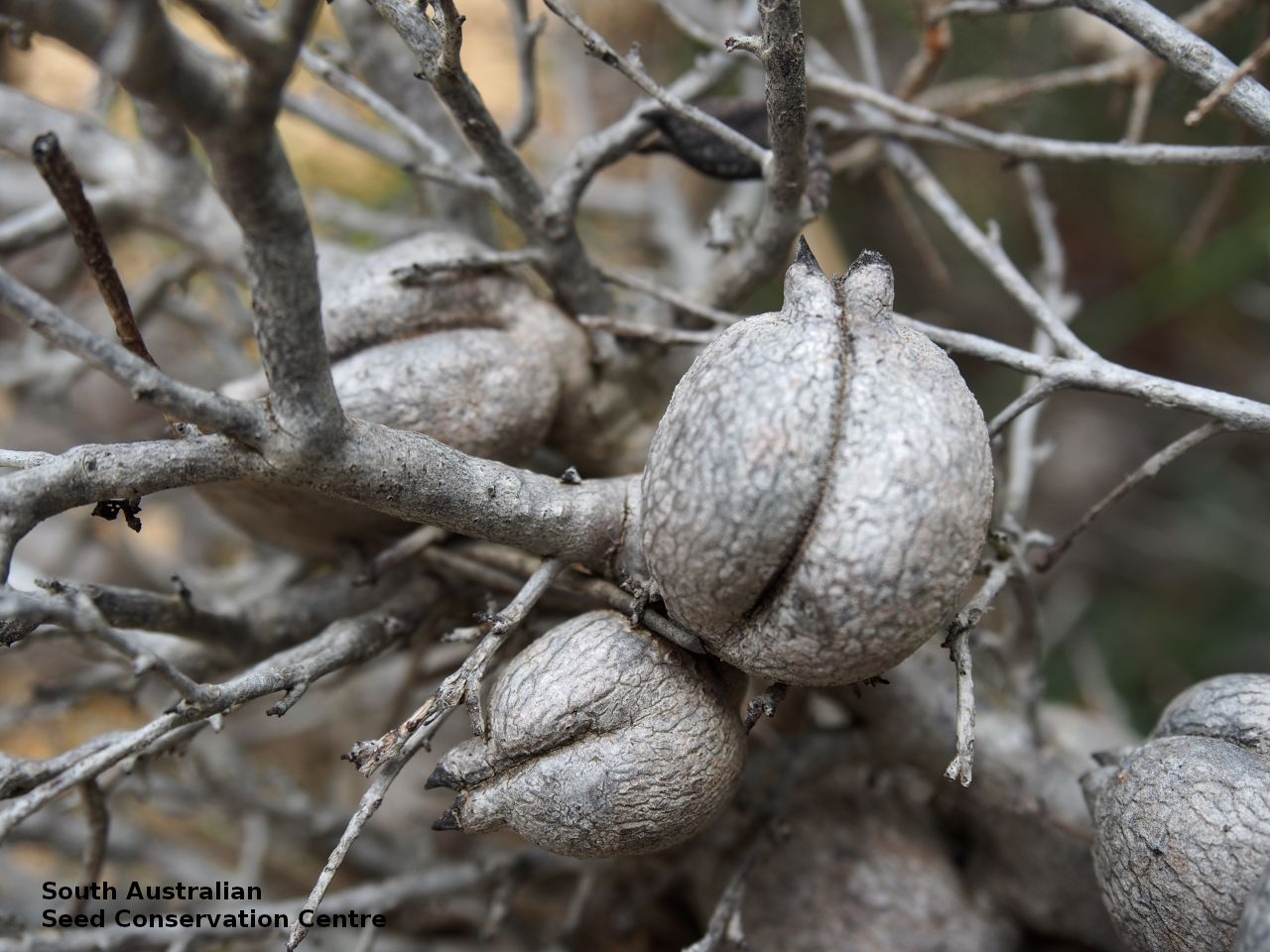
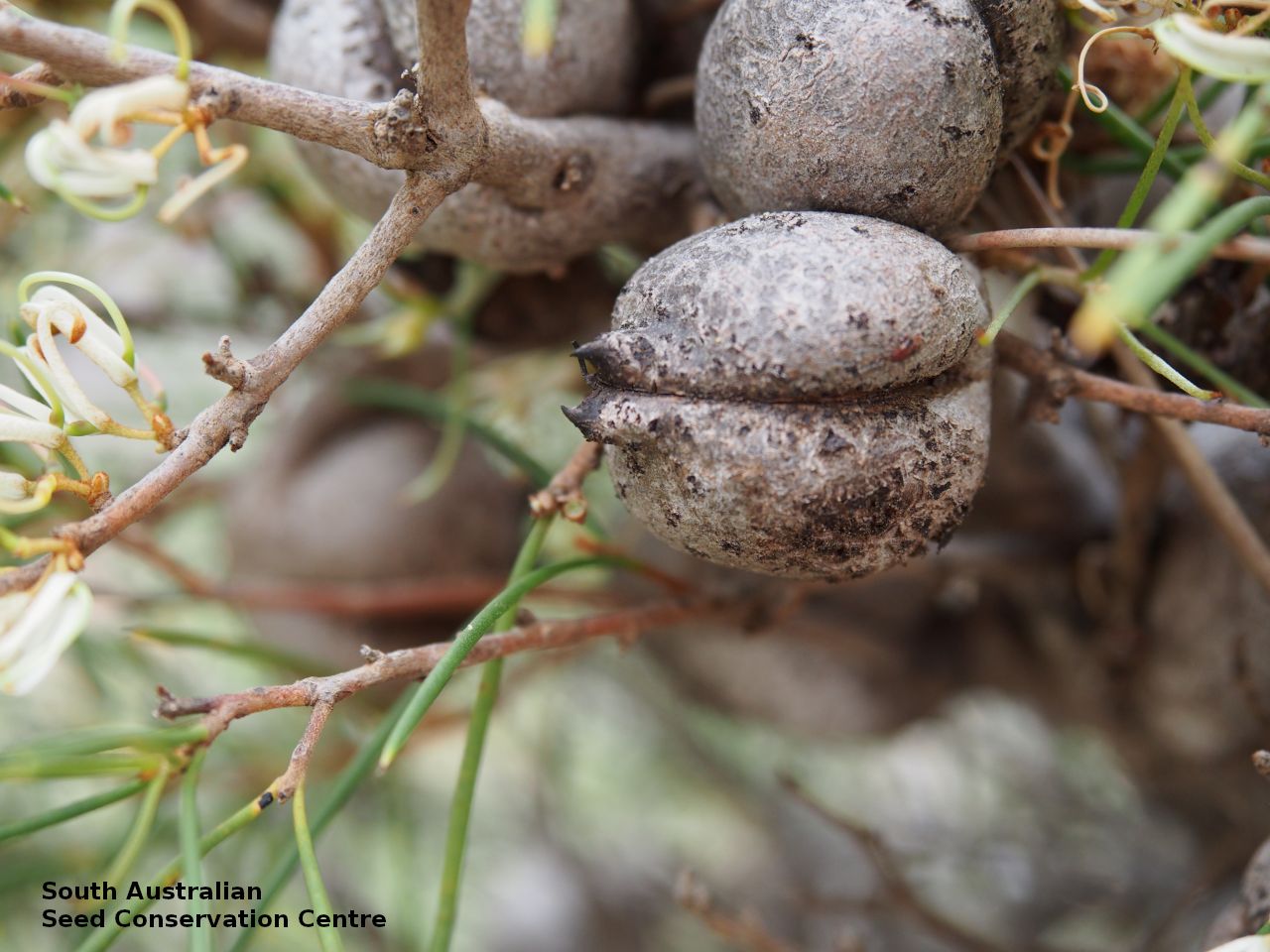
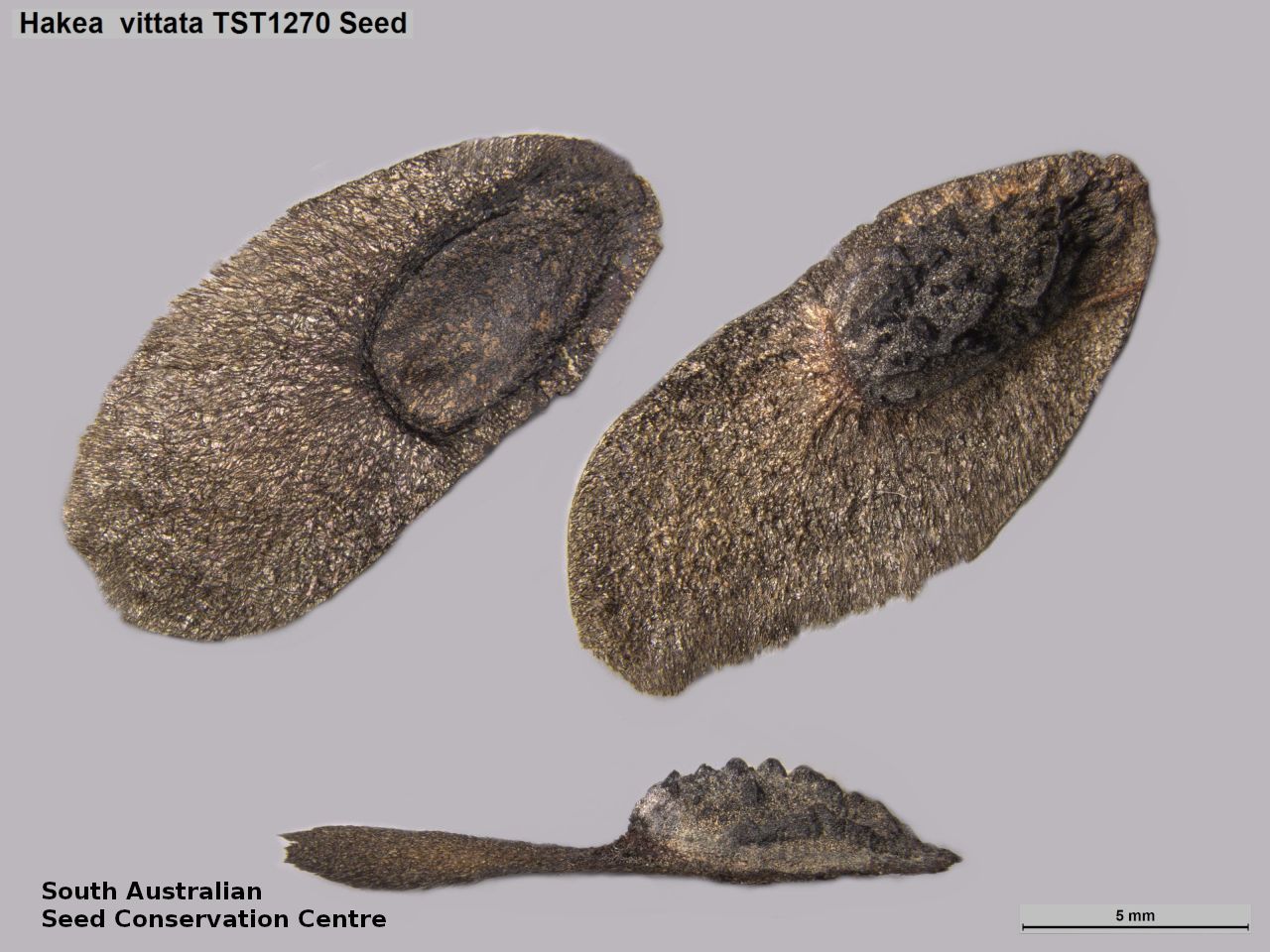

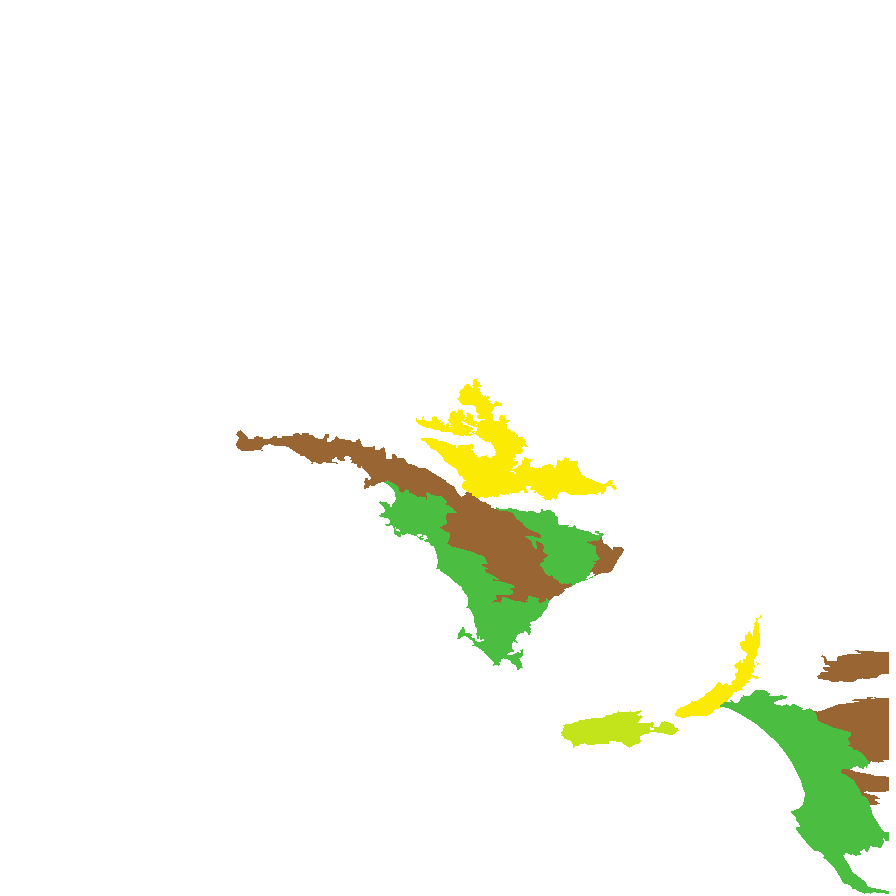
Botanical art
Common names
Striped Hakea
Limestone Needlebush
Etymology
Hakea, named after Baron Christian Ludwig von Hake (1745-1818), a German horticulturalist and patron of botany. Vittata, from the Latin 'vittatus' meaning longitudinally-striped, referring to the markings on the fruit.
Distribution and status
Endemic to South Australia and found on Eyre Peninsula, Kangaroo Island, Fleurieu Peninsula and the South-east, growing on sand, usually in limestone areas in mallee scrub. Native. Common in South Australia.
Herbarium regions: Eyre Peninsula, Southern Lofty, Kangaroo Island, South Eastern
NRM regions: Adelaide and Mount Lofty Ranges, Eyre Peninsula, Kangaroo Island, South East
AVH map: SA distribution map (external link)
Plant description
Prostrate, straggly or dense shrub to 2 m tall with hairy young branches. Leaves terete, to 80 mm long and 1.5 mm wide; glabrescent with a pungent tip. Dense clusters of leaves known as 'witches brooms' occur in the axils. Inflorescence in axillary flower clusters with 1�8 flowers, reddish outside, white inside. Flowering between August and November. Fruits are greyish-brown woody ovoid fruit to 24 mm long and 15 mm wide, with smooth or wrinkled surface and two short beaks. Fruit splits into two, to reveal two seeds. Seeds are dark-brown to black ovoid seed to 7 mm long and 4 mm wide (15 mm long and 7 mm wide including the wing that extends down both sides of seed). Seed embryo type is investing.
Seed collection and propagation
Collect seeds between January and December. Collect mature woody fruit that are greyish-brown and not split. These will contain seeds. Place the woody fruit in a tray and leave to dry until it split open. Fruits can be placed in the oven at low temperatures to achieve the same result. Place the dried fruit in a bucket and shake to dislodge the seeds from the valves. Separate the seeds from the fruit and store the seeds with a desiccant such as dried silica beads or dry rice, in an air tight container in a cool and dry place. From one collection, the seed viability was high, at 85%. Seeds are non-dormant, viable seed should germinate readily without pre-treatment.
| Location | No. of seeds (weight grams) | Number of plants | Date collected | Collection number Collection location | Date stored | % Viability | Storage temperature |
|---|---|---|---|---|---|---|---|
| BGA MSB | 1,800 (24.77 g) 1,800 (24.77 g) | 50 | 13-Feb-2006 | DJD383 South Eastern | 8-Aug-2006 | 85% | -18°C |
Number of plants: This is the number of plants from which the seeds were collected.
Collection location: The Herbarium of South Australia's region name.
% Viability: Percentage of filled healthy seeds determined by a cut test or x-ray.